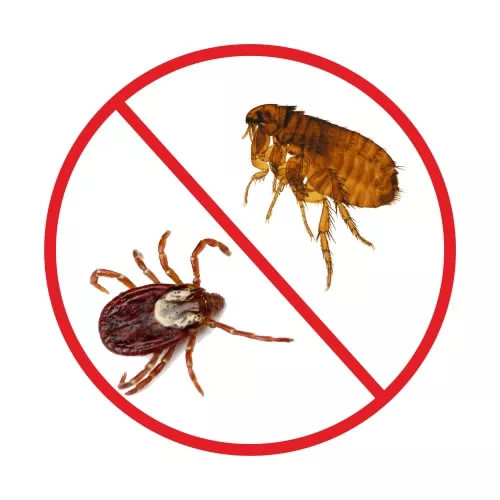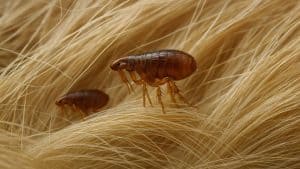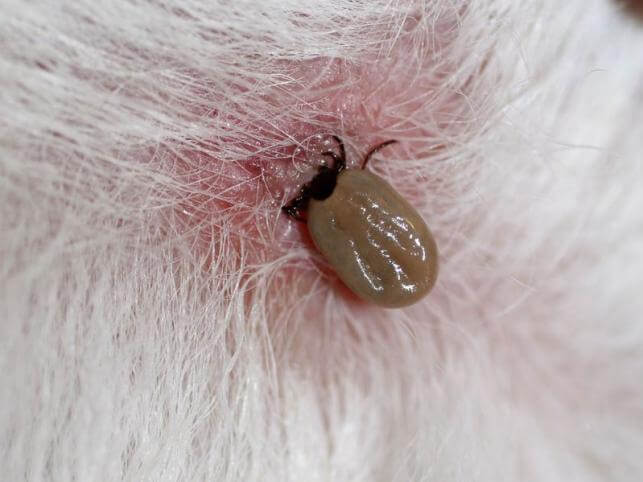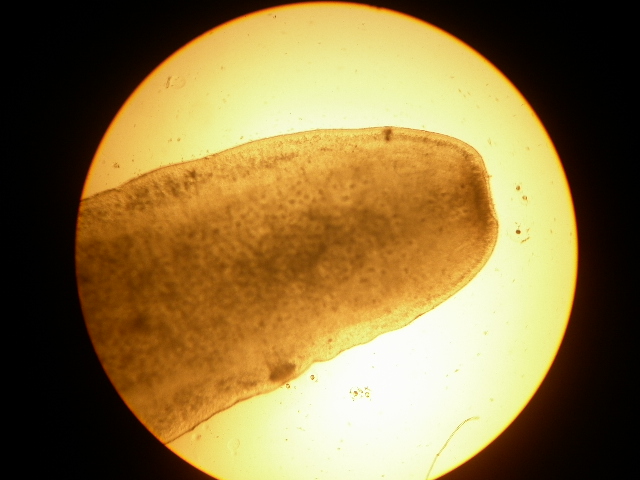External and Internal parasites

External AND INTERNAL Parasites
Fleas

Introduction:
Fleas can be an inconvenience to both pets and their owners year round. They are very active ectoparasites that reproduce rapidly, infecting the surrounding environment (and hosts) with their eggs.
Symptoms:
Even just the sensation of fleas crawling on our pets can be enough to make them crazy; scratching and chewing wildly to stop the itching. It is not uncommon for flea allergy dermatitis (FAD) to also occur as many animals are allergic to flea saliva. In animals with FAD, the intense scratching and licking can lead to skin sores, hair loss, and, in some cases, hot spots.
If the infestation continues and the number of fleas grow over an extended period of time, anemia can occur from blood loss. Conjunctivitis can also occur if fleas make their way into the animal's eyes. Furthermore, fleas can play a role in transmitting tapeworm infestations. Hatching larval fleas feed on tapeworm eggs which develop, as the flea does, and when the adult flea is ingested by the animal, it too becomes infected.
Prevention and Treatment:
The most important part of flea treatment is prevention, with year-round anti-flea treatments from the veterinarian. In the case of flea infestation, all types of anti-flea treatments may be used (spot treatments, shampoos, etc.). If the infestation is severe, the animal's bedding and environment should also be treated with anti-flea spray as 90% of fleas and their eggs can be found there.
TICK-BORNE DISEASES

Babesiosis
Introduction:
The most common tick-borne infection in dogs is Babesiosis. This is caused by a bite from an infected tick, when the parasite Babesia is transmitted to the bloodstream of the animal.
Symptoms:
Symptoms of this disease usually appear one week after the tick bite. It has quite severe symptoms, which can include high fever, lethargy, and lack of appetite. The parasites multiply in the erythrocytes, while destroying them, causing anemia, pale mucous membranes, and fatigue.
This anemia, caused by the destruction of the red blood cells can dye the urine dark brown. This may also cause jaundice, yellow mucous membranes and, in case of severe infection, it may cause severe kidney failure symptoms, with an increase in drinking and urination and, vomiting. The disintegrated red blood cells may also cause enlargement of the spleen or liver.
Diagnosis:
In addition to a complete history, the veterinarian will do a physical examination and blood test to diagnose Babesiosis.
Prevention and Treatment:
It is very important to prevent the disease by using products effective against ticks and other external parasites. There is now a vaccination against dog babesiosis. It is important to begin the anti-babesiosis treatment as soon as possible to avoid serious symptoms and complications.
There is medication against the parasite, but also other symptomatic treatment (eg. hematopoiesis support, fluid therapy to prevent kidney failure, treatment against secondary infections) may be required.
Lyme Disease
Introduction:
Similar, in many respects, to the human disease, the infection in dogs is spread by ticks infected by Borrellia. Since there is generally a long incubation time, fluctuation of the dog's condition is typical (sometimes being asymptomatic, sometimes having a fever or a limp). Unfortunately, as the symptoms are diverse, accurate diagnosis is often delayed, which can increase the onset of complications.
Symptoms:
Symptoms usually occur several weeks, or even months, after the tick bite. The migratory redness typical of a human infection is not necessarily seen in dogs, and is not easy to notice because of their fur. Low grade fever (high fever is not typical), loss of appetite, and lethargy are usual symptoms. Characteristic hind limb weakness and swaying can also be seen. Permanent limping can be caused by chronic articular degeneration. The pathogen may also attack the heart muscle as well.
Diagnosis:
Suspicion of the disease can be confirmed by blood tests.
Prevention and Treatment:
Defense against ticks is the most important factor in preventing Lyme Disease. Tick repellent products should always be used and it is necessary to look through our pet's fur after walking, especially through wooded or grassy areas. If a tick is found, it should be carefully removed as soon as possible, preferably with a tick-remover.
There is a vaccination against Lyme Disease which can protect against the disease.
Full recovery is possible, if the diagnosis is made in time, and full course of antibiotics is taken.
Intestinal Parasites

Introduction:
In carnivorous companion animals, intestinal parasitosis is often seen. Intestinal worms are not only repulsive but, they may be dangerous to us and cause serious illness in our animals. Infection is often caused by contact with infected feces, but infection through the placenta, followed by the mother's milk, is also common. Fleas can spread tapeworms as well. Decreased immune condition will increase the chances of infection, and helminthiasis itself can reduce the overall defensive ability. This is a very common problem among puppies.
Symptoms:
There are several different types of intestinal parasitosis. We most commonly see roundworms which are off-white, cylindrical, and thread-like but, may be spaghetti sized as well. Other nematodes commonly seen are hookworms, which are also off-white but flat and ribbon-like in appearance. There are also cestodes (most commonly referred to as tapeworm) which are flat, white worms made up of tiny segments, the size of grains of rice.
Regardless of the type of intestinal worm, the most common symptoms are: loss of appetite (and consequent weight loss), mucoid feces, diarrhea, anal pruritus, and, occasionally, worms or segments in the feces or vomit.
Diagnosis:
If the symptoms are not clear, parasitological examination of the feces should be performed.
Prevention and Treatment:
It is important to emphasize the necessity of giving deworming products to all carnivorous small animals on a regular basis. Adult worms release eggs and the eggs become infective within one month (depending on the type of worm) so it is possible to become infected at any time during the life cycle. It is recommended that puppies are treated with a de-wormer starting when they are 2-3 weeks old. It is often suggested to give a broad-spectrum antiparasitic at a quarterly rate for dogs that are frequently hiking or around other dogs, or for cats and ferrets who live outside, and for families with small children. Deworming, as well as Rabies vaccinations, are required by law every year. In addition to a broad-spectrum antiparasitic we must always remember antiflea treatments as fleas can spread tapeworms, which can infect humans as well.
